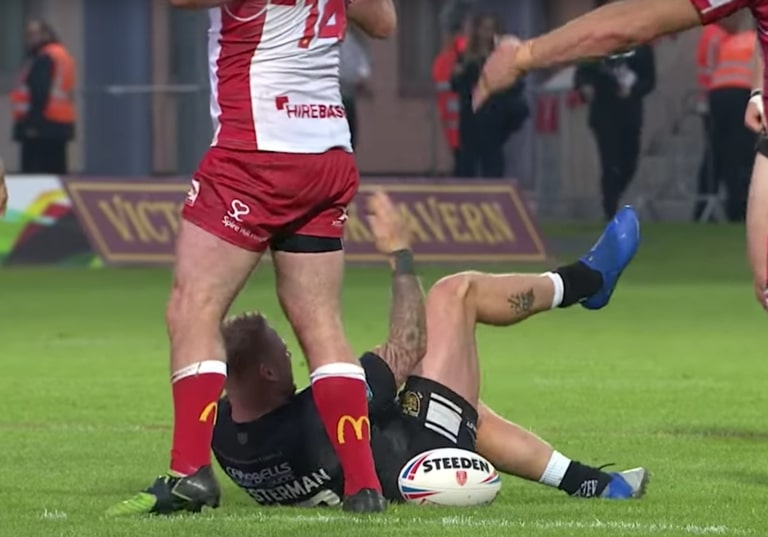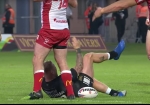
Your knee is a complex joint that’s located between your upper and lower leg. Three bones meet at your knee:
- Femur (thighbone)
- Patella (kneecap)
- Tibia (shinbone)
Various types of cartilage, ligaments, and tendons in your knee are vital for it to function correctly.
A dislocated knee occurs when the position of the thighbone relative to the shinbone becomes disrupted at the knee joint. It can happen through trauma to your leg, like from falls, sports injuries, and car accidents.
A dislocated knee is different than a dislocated kneecap. That occurs when the kneecap bone slips out of place. It can happen when a sudden change of direction or blow occurs while your foot is planted on the ground.
A dislocated knee is a rare but serious injury. Dislocation can damage several important ligaments, blood vessels, and nerves. The health and integrity of the joint and leg may be at risk.
Read on to learn more about a dislocated knee, how it’s diagnosed, and its treatment options.
What are the symptoms of a dislocated knee?
The symptoms of a dislocated knee usually occur immediately and worsen over time. Sometimes, the knee may slip back into place following a dislocation. However, it will be painful, swollen, and most likely unstable.
SYMPTOMS OF A DISLOCATED KNEE
- Bearing a “popping” sound at the time of injury
- Severe pain in the area of the knee
- A visible deformity at the knee joint
- Instability of the knee joint, or feeling like your knee joint is “giving way”
- Limitations in the range of movement of your knee
- Swelling
- Inability to continue with activities, whether they involve day-to-day tasks or sports
How is a dislocated knee diagnosed?
Following a potential knee dislocation, a healthcare provider’s first priority will be to stabilize your injured limb.
Reduction, or repositioning of the injured joint, is crucial in order to reduce any pressure on the skin, blood vessels, and nerves in the affected area. Sometimes reduction occurs spontaneously before you’re able to see a healthcare provider.
Once you’re stabilized, your doctor can then assess the extent of your injury. They can perform various tests to determine the amount of ligament damage that’s occurred. These tests typically involve determining the stability and range of movement of specific parts of the knee.
Since a dislocated knee can cause potentially serious disruption to the blood vessels and nerves of the joint, your doctor will perform an examination to assess if injury to these structures has occurred. This exam may include:
- Checking the pulse in several places on your leg and knee. This is called checking posterior tibial and dorsal pedal pulses, which are located in the region of the knee and foot. Lower pulses in your injured leg could indicate an injury to a blood vessel in your leg.
- Checking the blood pressure in your leg. Called the ankle-brachial index (ABI), this test compares the blood pressure measured in your arm to the blood pressure measured in your ankle. A low ABI measurement can indicate poor blood flow to your lower extremities.
- Checking your sense of touch or sensation. Your doctor will assess the feeling in the injured leg versus the unaffected leg.
- Checking nerve conduction. Tests like electromyography (EMG) or nerve conduction velocity (NCV) will measure the function of the nerves in your leg and knee.
- Checking your skin color and temperature. If your leg is cold or changing colors, there may be blood vessel problems.
The use of imaging tests, such as X-ray and MRI, can help your doctor see and diagnose any damage that’s occurred to the bones, ligaments, or tendons of the knee.
Additionally, a technique called arteriogram may be used to assess blood vessel damage. It combines an injected dye and X-rays so your doctor can see how your blood flows through the arteries in your legs.
Congenital knee dislocation (CKD)
CKD is a rare condition in which the knee joint is dislocated at birth. Many factors have been suggested as causes. It may occur by itself or along with other developmental conditions, such as clubfoot.
Doctors diagnose CKD after birth. It typically involves X-ray imaging of the affected joint. Treatment options can include serial casting or surgery.
What’s the treatment for a dislocated knee?
The first part of treating a dislocated knee is to be sure the kneecap is in its proper position. The process of moving the kneecap back into place is called reduction.
During reduction, a healthcare provider will give you medication or sedate you so you don’t feel pain. They’ll move your leg in such a way that it causes the kneecap to return to its proper place.
After the reduction, your leg will be placed in a brace to keep it stable and prevent the kneecap from moving again.
You may need surgery to repair damaged ligaments, blood vessels, or nerves. If your blood vessels are damaged, you may need immediate surgery.
Conservative treatment, which can involve immobilization of the injured joint, can be used in some cases if:
- The joint appears stable following reduction
- No blood vessel or nerve damage has occurred
- The collateral knee ligaments (MCL and LCL) are intact
Although conservative treatment can stabilize a knee, it can also lead to stiffness and future problems with the joint.
Regardless of the treatment type required, you’ll need rehabilitation, such as physical therapy, following a knee dislocation.
Your specific rehab program will depend on how serious your injury is and the type of treatment you received. Your doctor will work with you to determine a rehab program that’s right for you.
Precision Pain Care and Rehabilitation has two convenient locations in the Richmond Hill – Queens and New Hyde Park – Long Island. Call the Richmond Hill office at (718) 215-1888, or (516) 419-4480 for Long Island office, to arrange an appointment with our Interventional Pain Management Specialist, Dr. Jeffrey Chacko.















